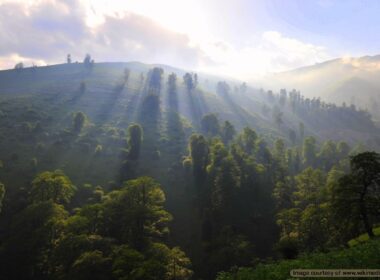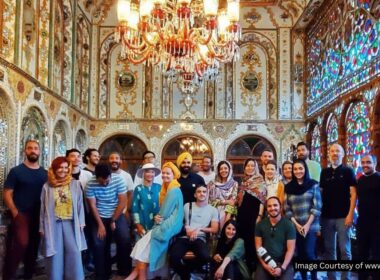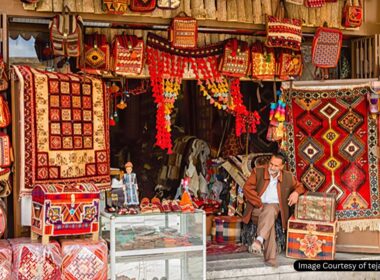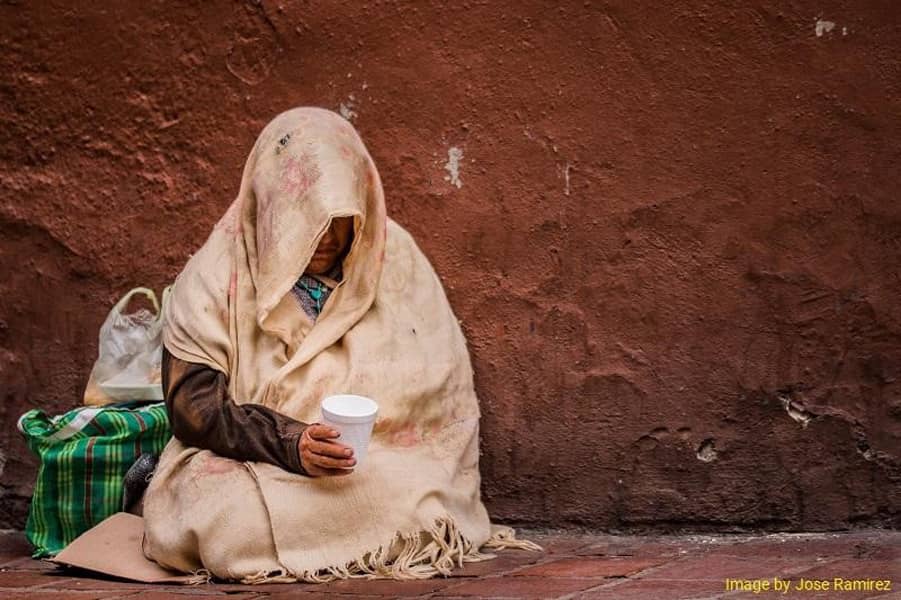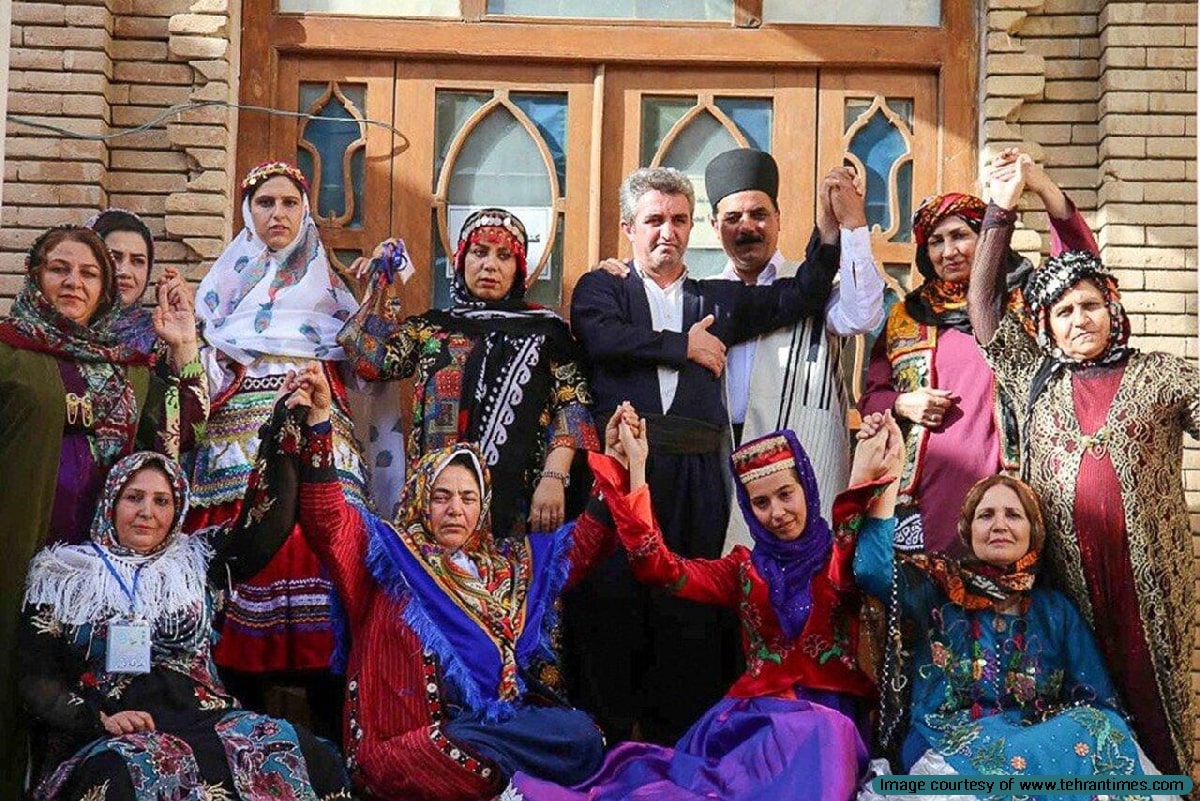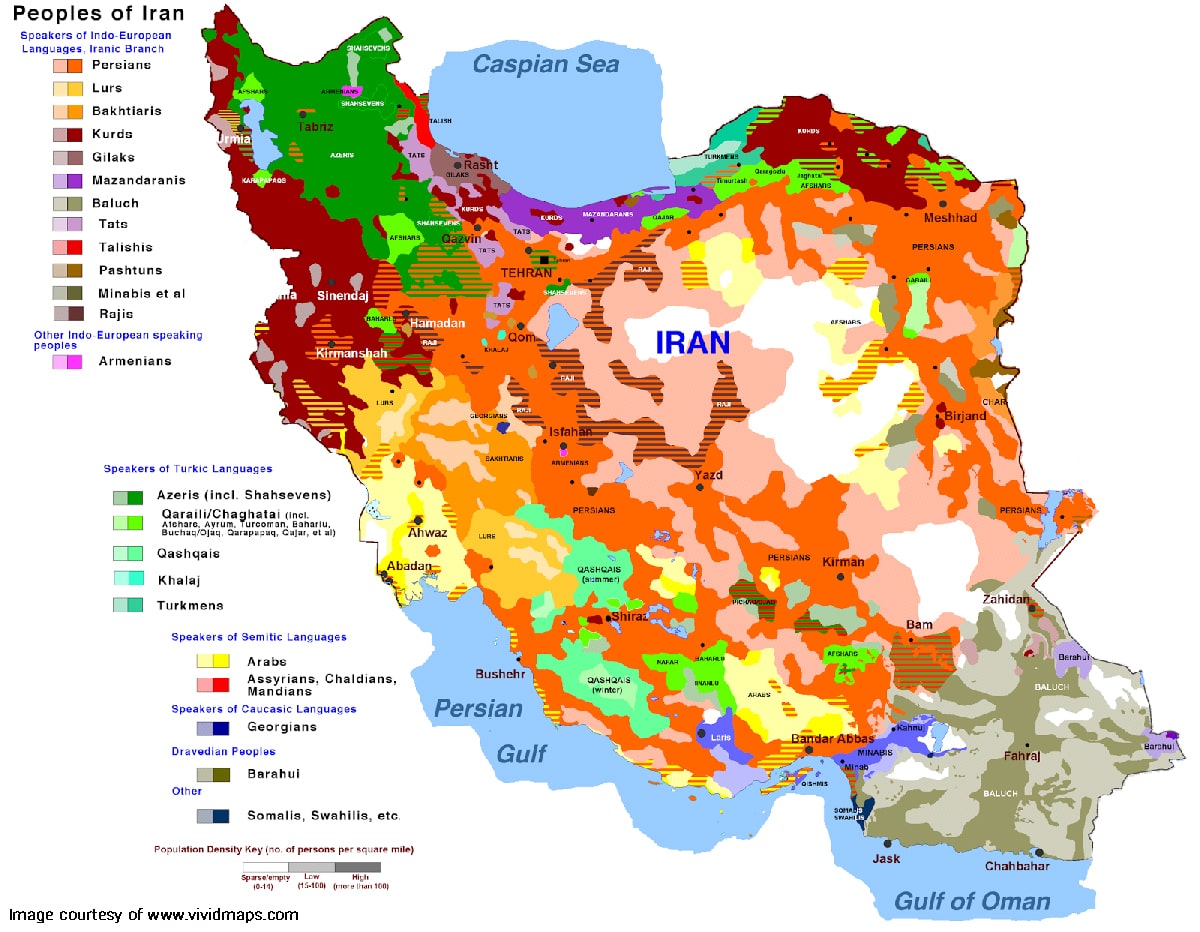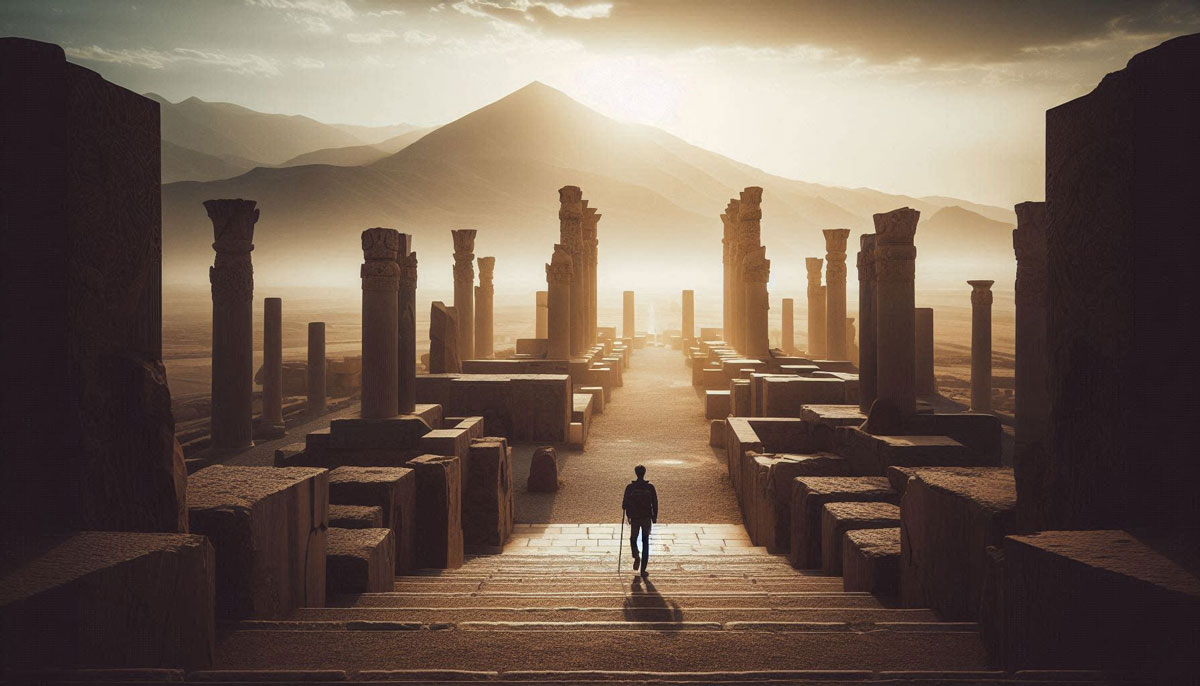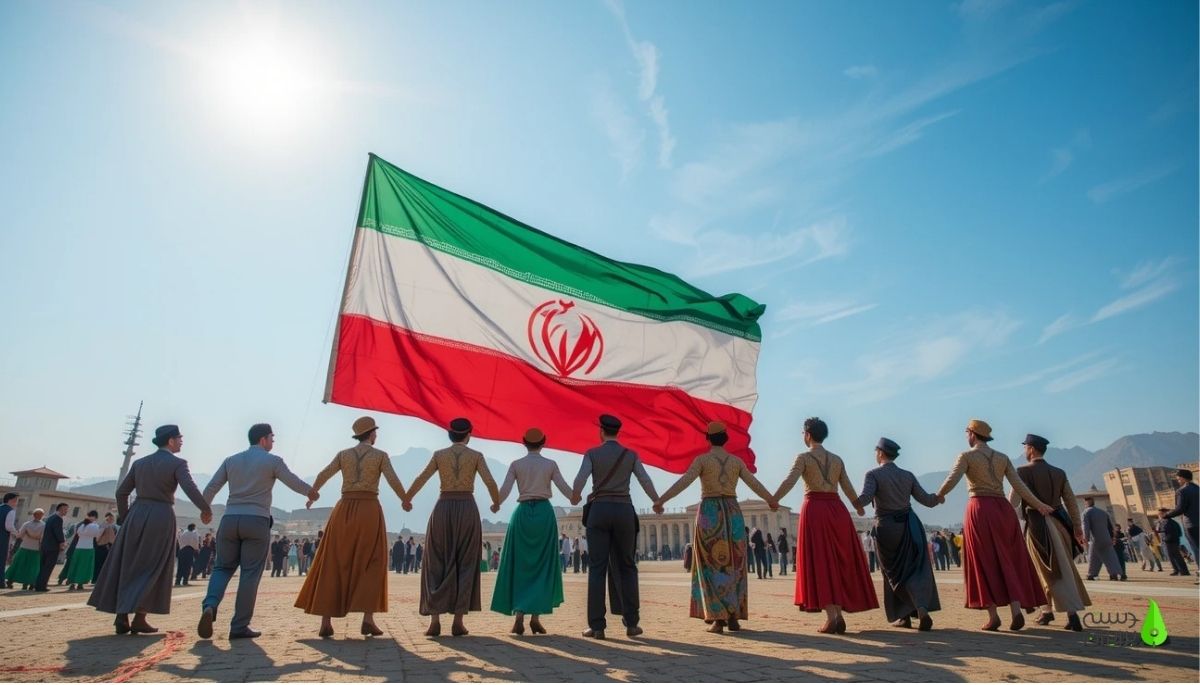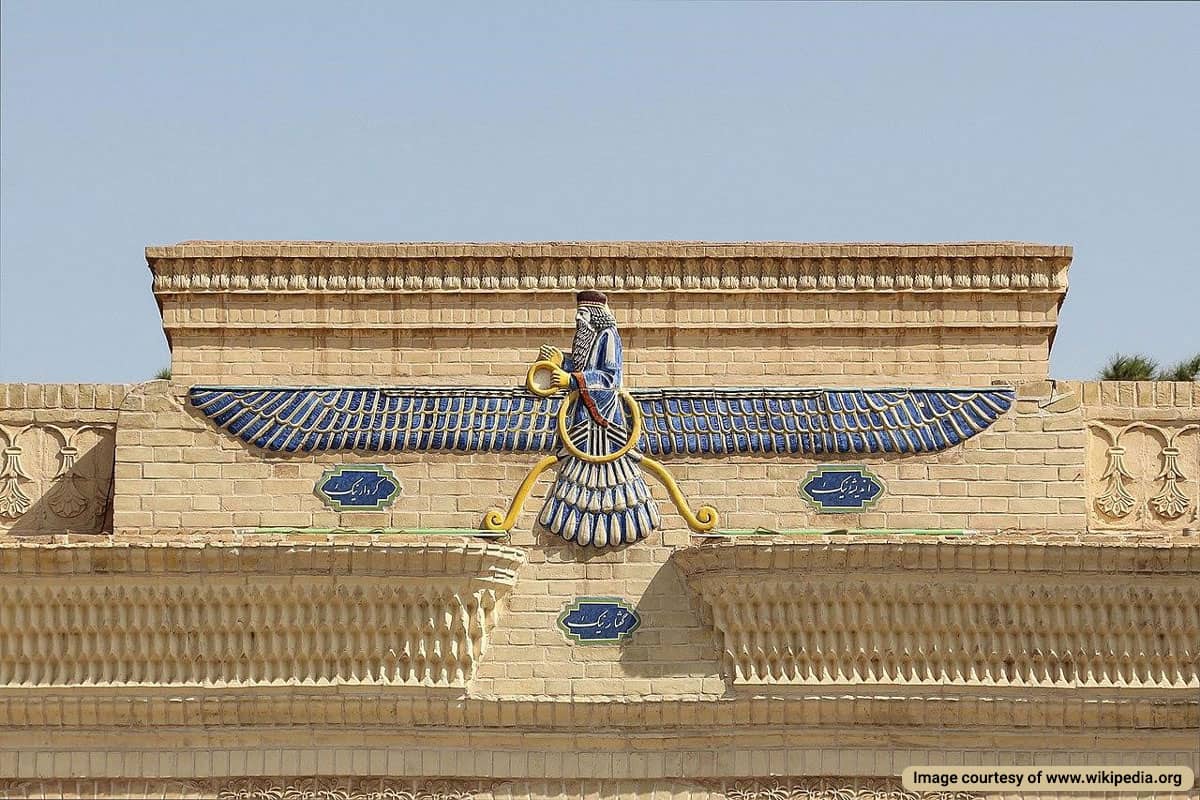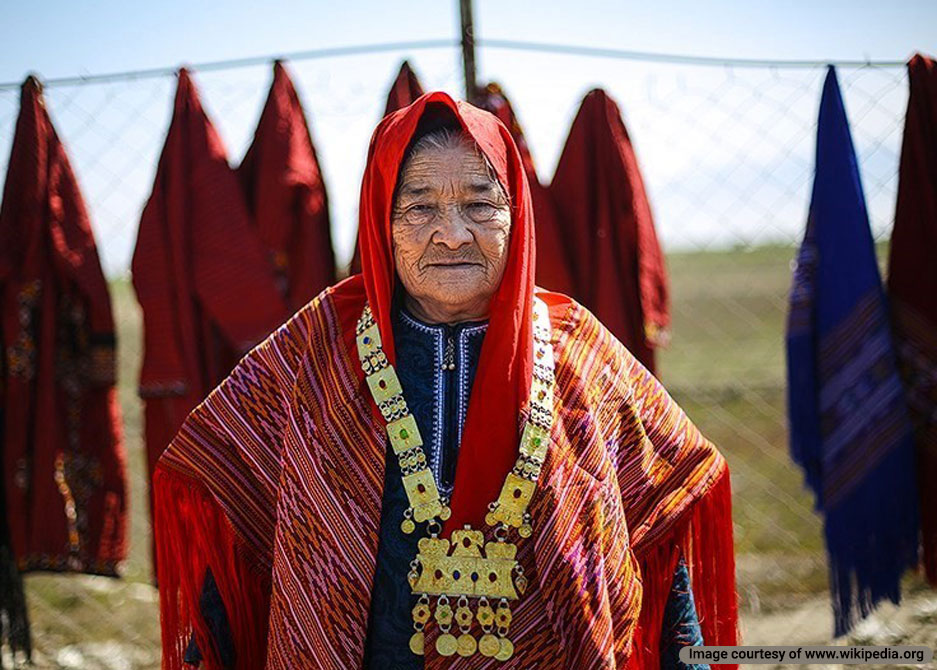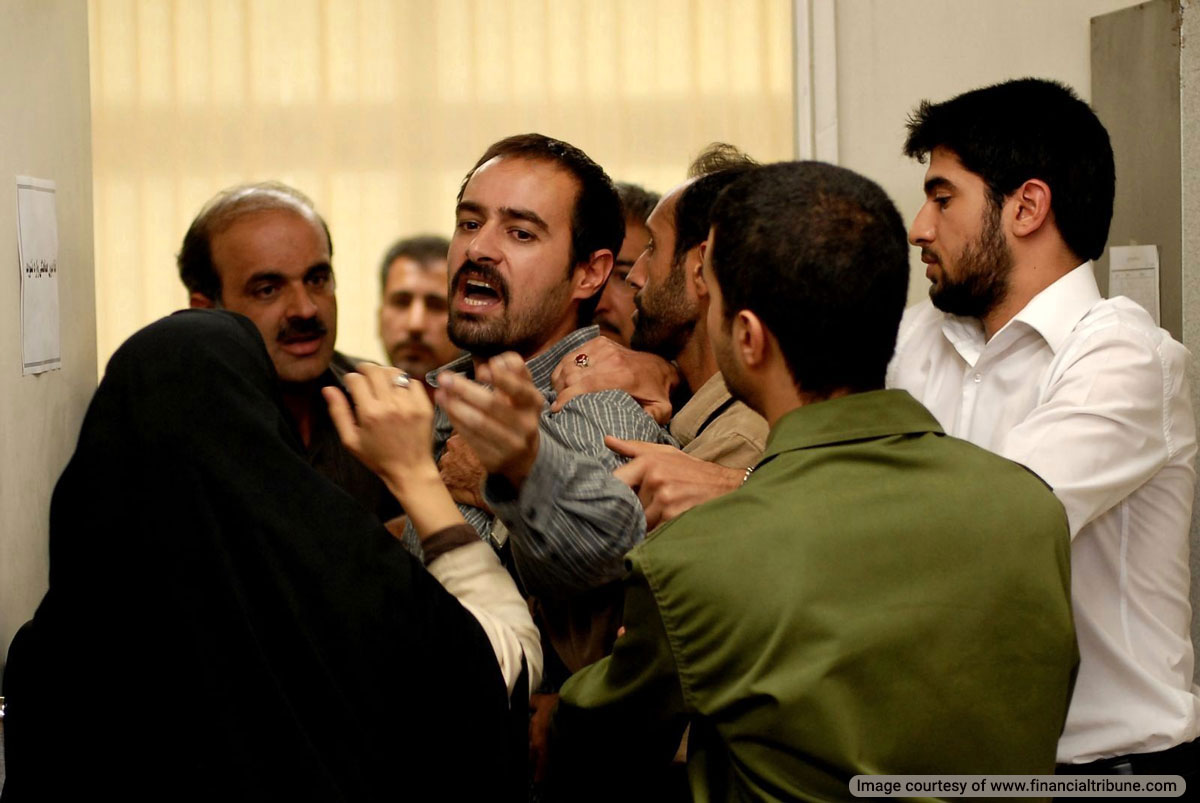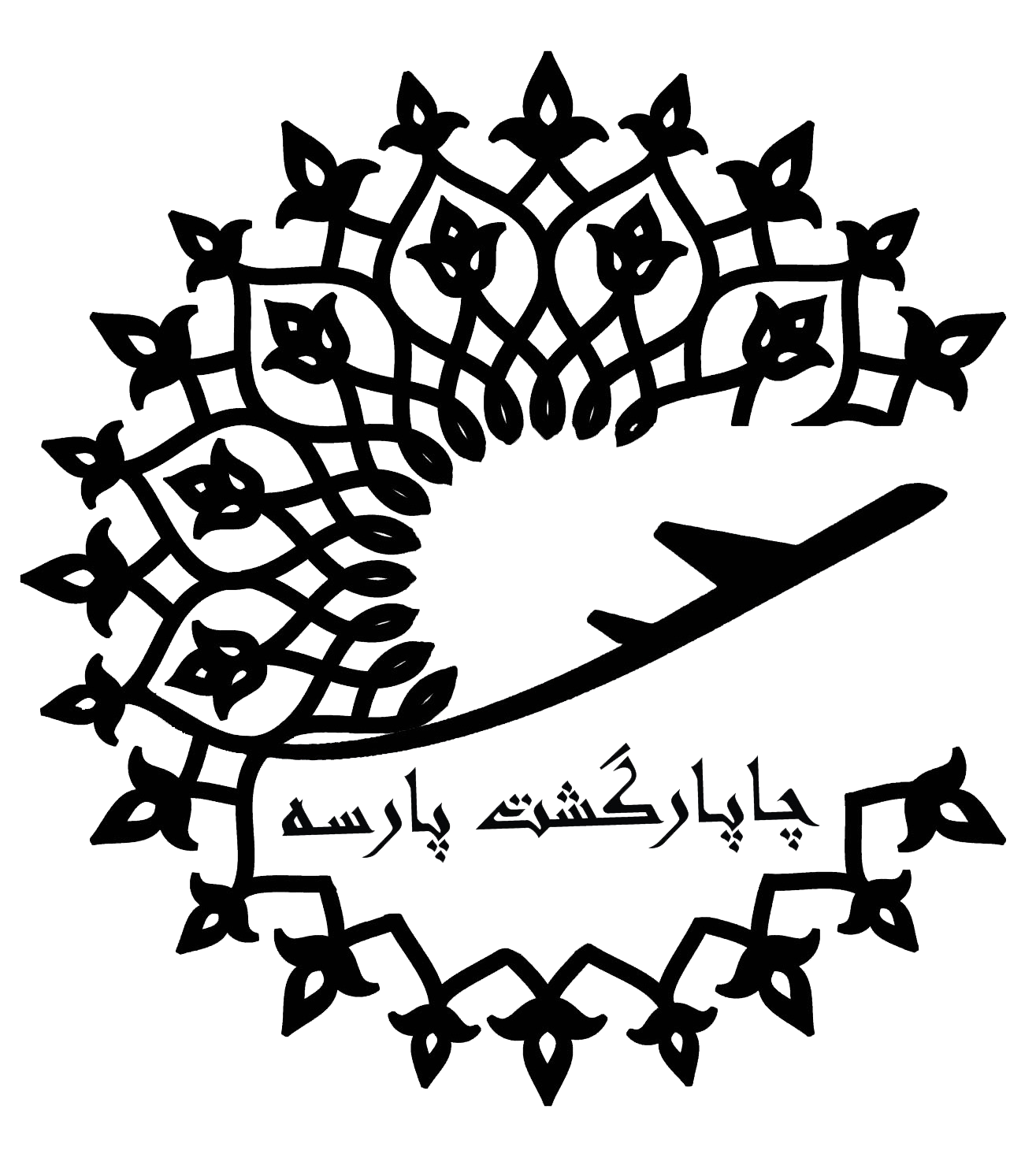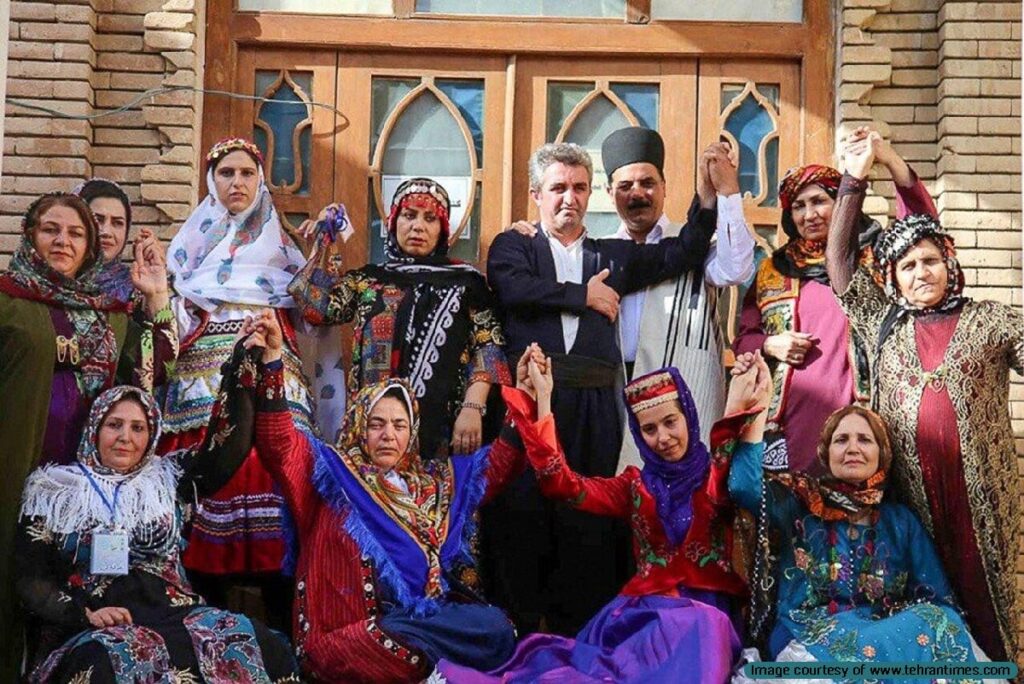
Traditional Iranian clothing represents a rich tapestry of history, culture, and artistry, reflecting the diverse heritage of the Persian people. This blog post explores 21 compelling examples of traditional Iranian clothing, showcasing the unique styles, fabrics, and craftsmanship that define Persian costumes. Join us as we delve into this vibrant aspect of Iranian traditions.
Persian Costume Role in Ceremonies, Festivals, and Everyday Life
In contemporary Iran, traditional Iranian clothing plays a role in cultural ceremonies, festivals, and everyday life. During significant events such as weddings, Nowruz (the Persian New Year), and various local celebrations, the wearing of traditional garments is a vital expression of cultural pride and continuity.
These occasions allow individuals to adorn themselves in garments that connect them to their ancestors and the stories of their forebears. Additionally, traditional Iranian clothing enriches daily life in many rural and semi-urban areas, where residents often prefer to wear these cultural outfits for their comfort and connection to their roots.
Overview of Fabrics and Materials
Traditional Iranian clothing is characterized by the use of a variety of fabrics and materials that reflect the country’s rich textile heritage.
Common Materials Used in Persian Costumes
- Silk: Renowned for its luxurious feel and sheen, silk has historical significance in Persian attire. Often used in formal and ceremonial clothing, it symbolizes elegance and prestige.
- Cotton: As a versatile and breathable fabric, cotton is widely used in everyday clothing. Its softness makes it ideal for warmer climates, making it a popular choice in many rural areas.
- Wool: Known for its warmth and durability, wool is commonly used in colder regions.
21 Regions of Iran and Their Traditional Costumes
1.Mazandaran
Traditional Iranian Clothing for women in Mazandaran:
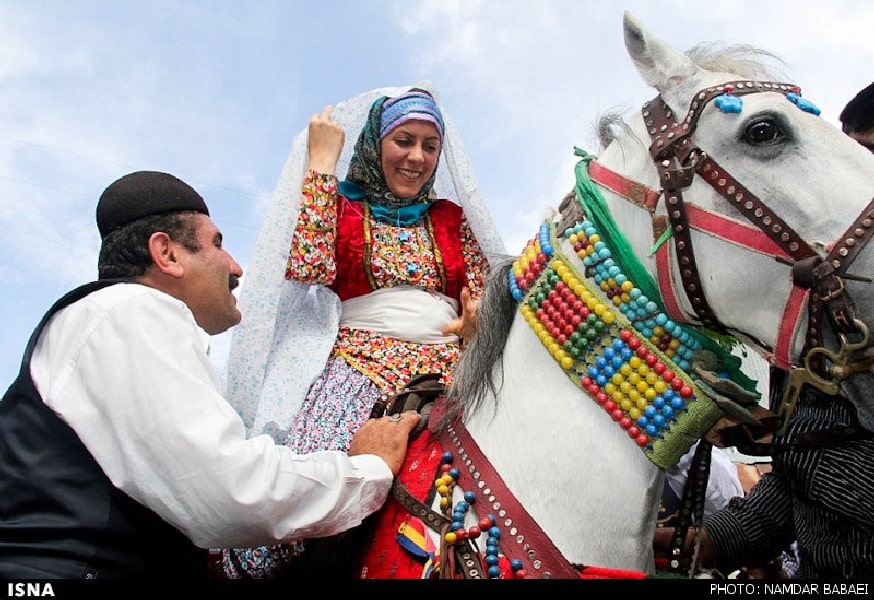
Women’s clothing reflects Mazandaran’s lush nature and coastal heritage with vivid colors. They often wear colorful “malek” dresses, which are long and flowy, characterized by vibrant prints and intricate embroidery. Over the dress, they usually wear a short vest named “Simpoosh” made from velvet with coin embroidery “Sekeh Dozi”. Floral scarves called “Charghad” are also used mostly in farming to keep hair clean.
Traditional Iranian Clothing for Men in Mazandaran:
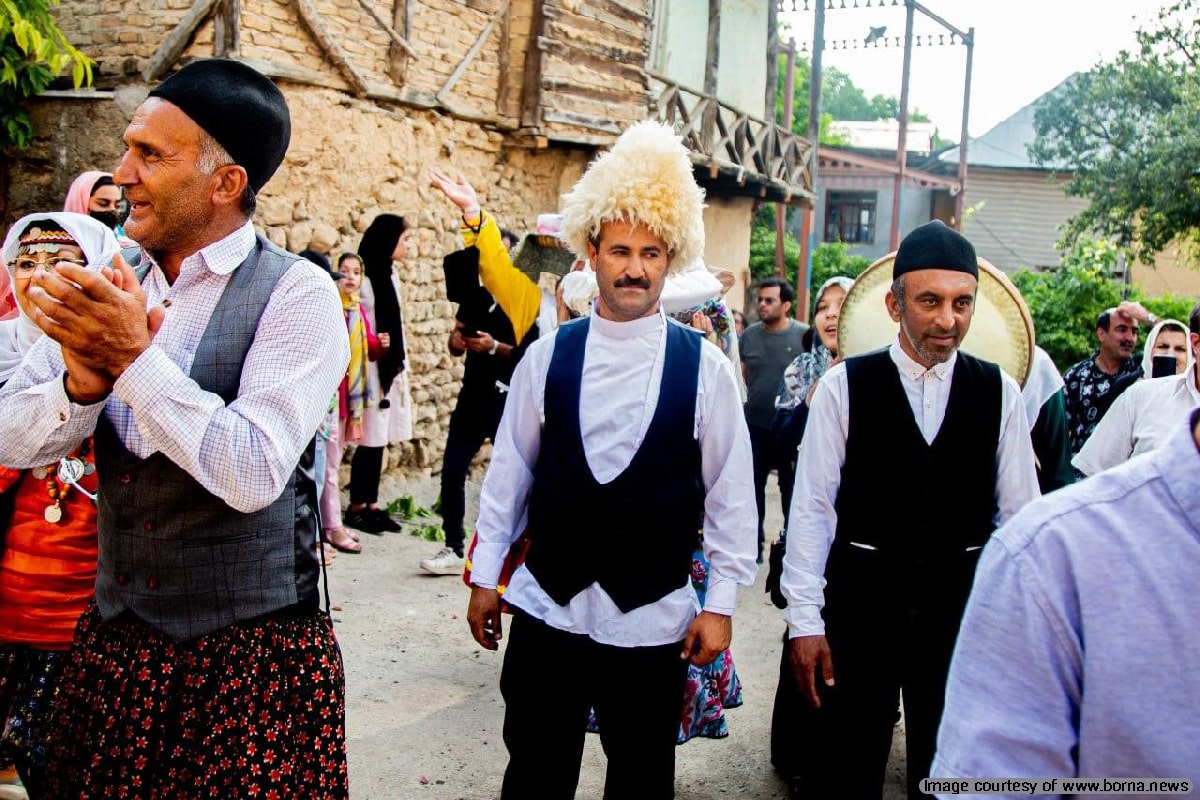
Men typically wear “Tomman” (loose-fitting trousers) made with canvas fabrics with silk shirts named “Joomeh”. The muggy weather inspires the use of lightweight fabrics like cotton and linen. Over the shirt they mostly wear a neck vest named “Nim-Taneh” in daily life. For ceremonies and winter, they add coats named “Ghaba” and “Labbadeh” which is a silk shawl.
2.Gilan
Traditional Iranian Clothing for women in Gilan:
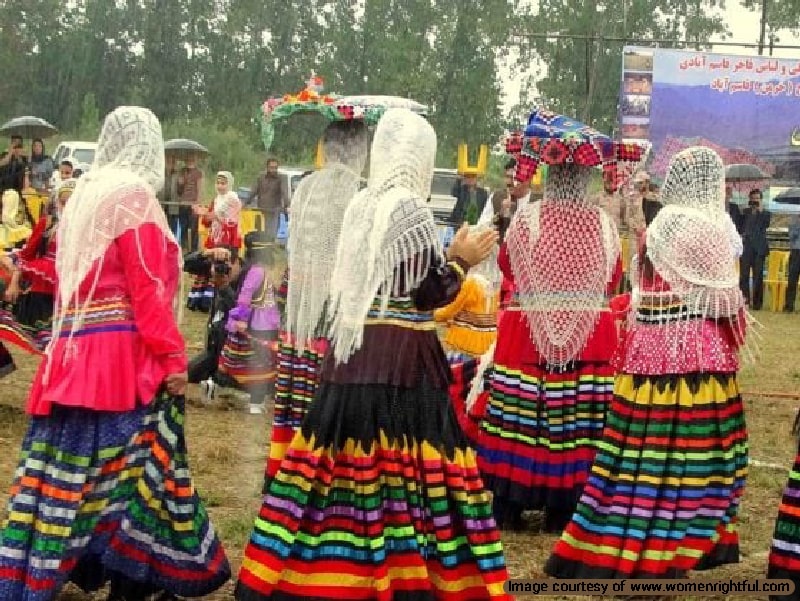
Women frequently wear colorful skirts named “Gerd Tomman” or “Shaliteh” which represent their colorful nature. Also, they wear a vest over a shirt with a slit or “Jommeh”. Women in Gilan wear lace scarves called “Lachak” and “Dastmal” to complete their outfits.
Traditional Iranian Clothing for men in Gilan:
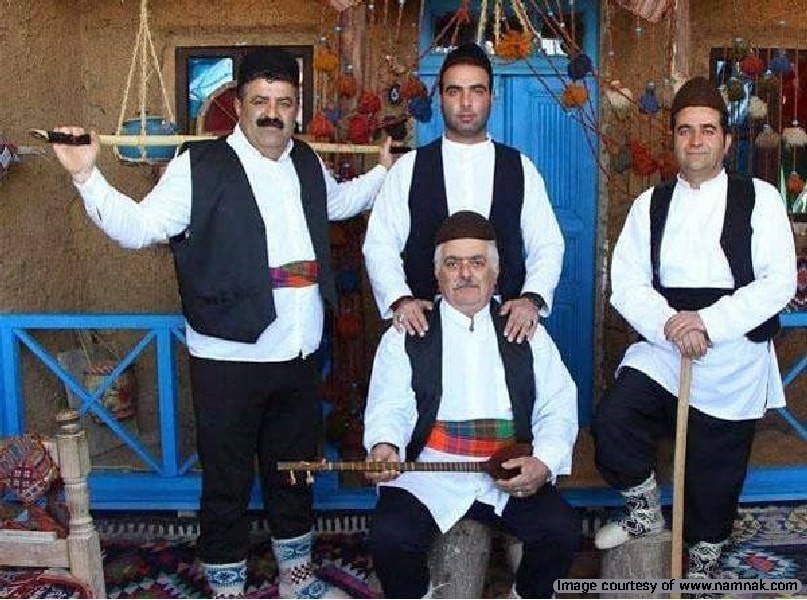
Men mostly wear a wool jacket or “Chokha”, a linen white shirt, and tight trousers named “Sholar”. They also wear round hats made from felt. Their leather shoes “Chomosh” are set with a pair of wool socks which is a good option for walking on muddy routes.
3.Golestan
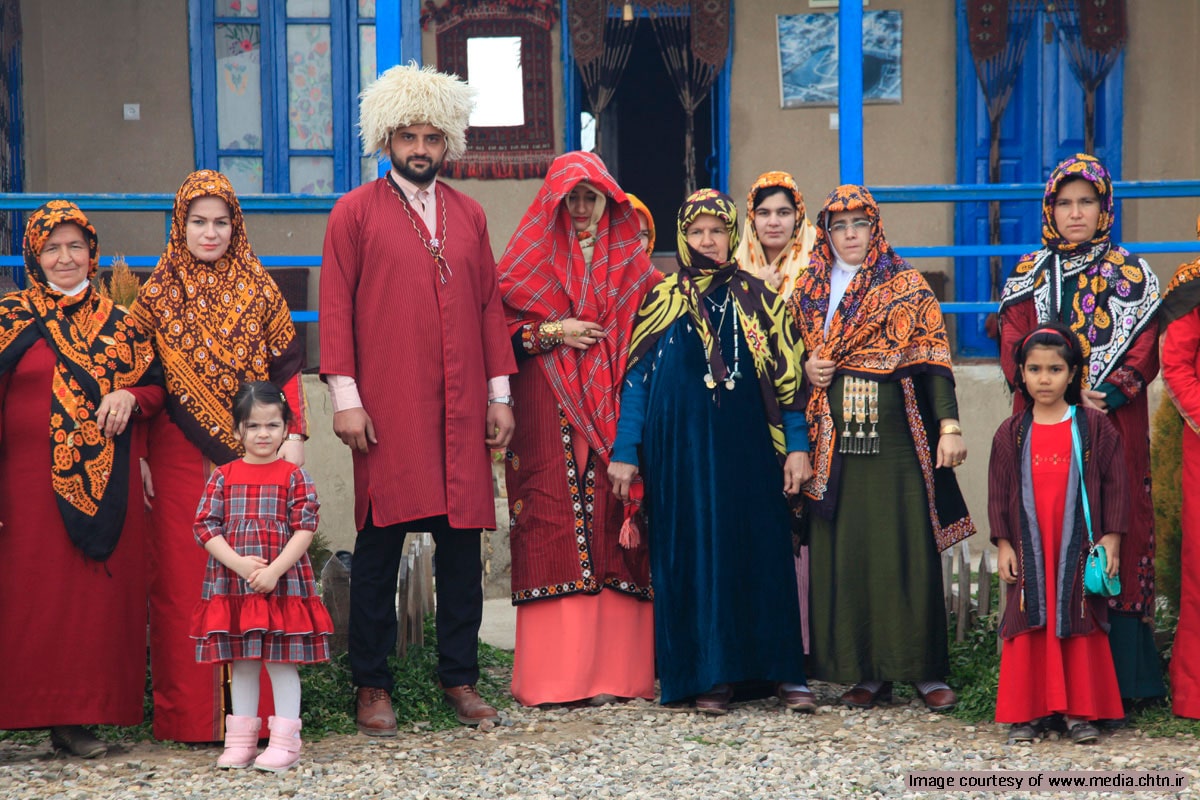
Turkmen traditional clothing showcases a rich blend of culture and artistry, with significant pieces like the “don,” a shared garment for both men and women. Men typically wear long tunics called “chapan” over loose trousers known as “belq,” embellished with intricate embroidery inspired by nature.
A notable accessory in Turkmen culture is the turban-like scarf called “korchte,” thicker with elaborate embroidery, and the lighter “Gyňaç,” made of silk with variations like “kermis Gyňaç” and “kelleli Gyňaç.”
Women enhance their hairstyles using accessories like “sach bagh.” Additionally, they adorn their hair with beautiful earrings made of gold and silver, complementing it with a round, flat hat decorated with sequins or “qabq” made of silver.
The traditional Turkmen hat, known as “telpek,” is a significant element of men’s attire in Turkmen culture. These hats are typically made from thick wool or felt and are characterized by their distinctive design, which often features a rounded or conical shape.
4.Tehran
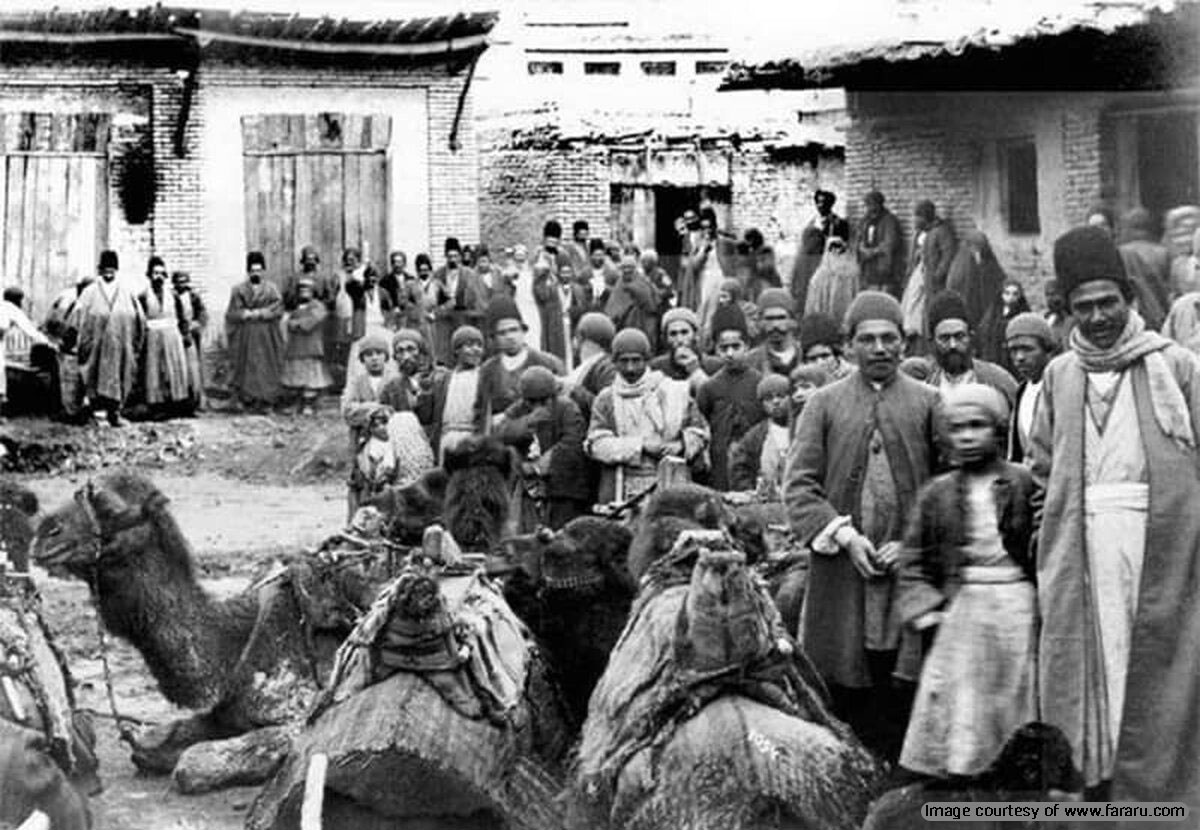
Traditional garments in Tehran include embroidered jackets with a “Bote Jeghe” pattern. Long flowy skirts for women, and “polo” shirts for men sometimes with bowtie, often incorporating Persian motifs in contemporary designs. Hats were also an important item in men’s wardrobe, mostly black named “Moghavaii”.
Women mostly wore black “Chador” and white veils or “Robandeh” in public places that covered their faces and bodies completely.
5.Kermanshah
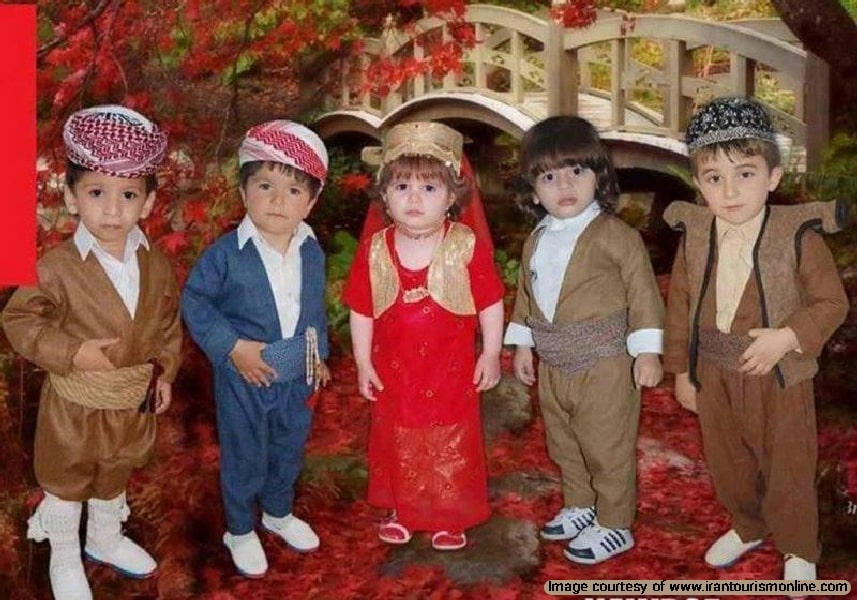
Kermanshah women often wear a six-piece dress known as “Yal.” This ensemble typically consists of several layers: an undergarment, a long dress, a special coat for colder weather, and additional accessories. The Yal includes “Kamarchin” or a long dress, “Sakhme” or a short vest, “Mashte” or a large silk scarf and a hat named “Kola Lachak”.
Women wear various types of shoes, each with its charm. Some popular choices include:
- “Saghari”: A type of slip-on shoe.
- “Ghandareh”: Traditional leather shoes.
- “Giveh” and “Galesh”: Handwoven shoes made from natural fibers.
Kermanshah men, particularly in cities like Paveh, Javanrood, Ravansar, and Nowsud, wear clothing similar to that of Sanandaj (a neighboring region). The Sanandaji attire includes:
Kurdish Pants: These pants are straighter in the cut compared to other styles.
Vest-like Velvet Cloth or “Qua”: In the past, men wore a vest-like velvet cloth called “Qua” over their long dress known as “Keras”. This combination was reminiscent of the traditional clothing worn in Kurdistan.
6.Kohgiluyeh and Boyer-Ahmad
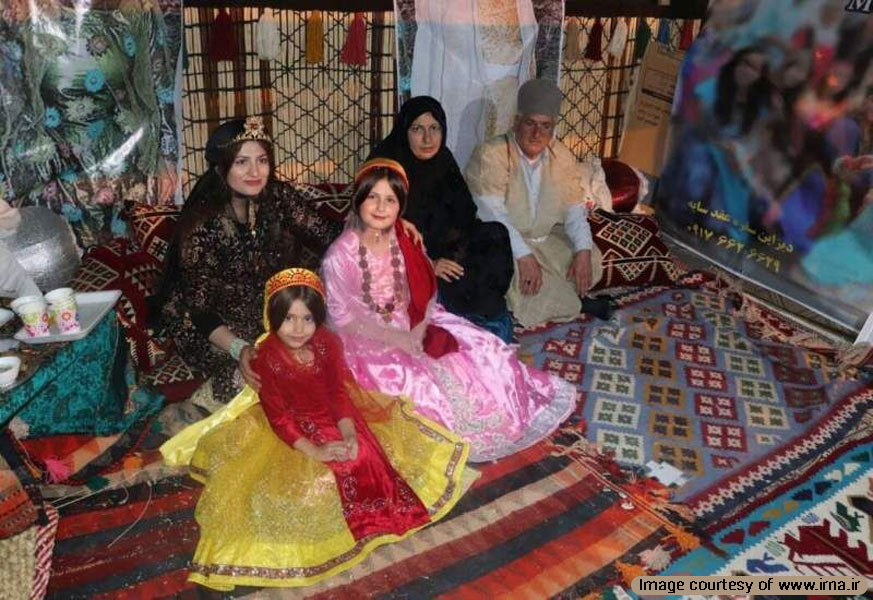
For men, the typical attire includes a long tunic known as “Jameh,” often paired with loose-fitting trousers called “Sholval.” These garments are usually made from wool or cotton, providing comfort and durability suitable for the region’s varied climate. Men also wear a wide belt called “Patteh” around their waist, which is both functional and decorative. To complete the ensemble, a felt hat known as “Tiares” is worn, adding a distinctive touch to their traditional look.
Women in this province wear colorful and intricately designed clothing that highlights their craftsmanship. A key piece of their attire is the “Joubbeh,” a long, flowing dress adorned with vibrant embroidery and patterns. This is often complemented by a “Meyna,” a long scarf that is elegantly draped over the head and shoulders, and a “Lachaki,” a traditional hat that secures the scarf in place. The women also wear “Shaliteh,” a type of wide-legged trousers that allows for ease of movement.
7.Qazvin
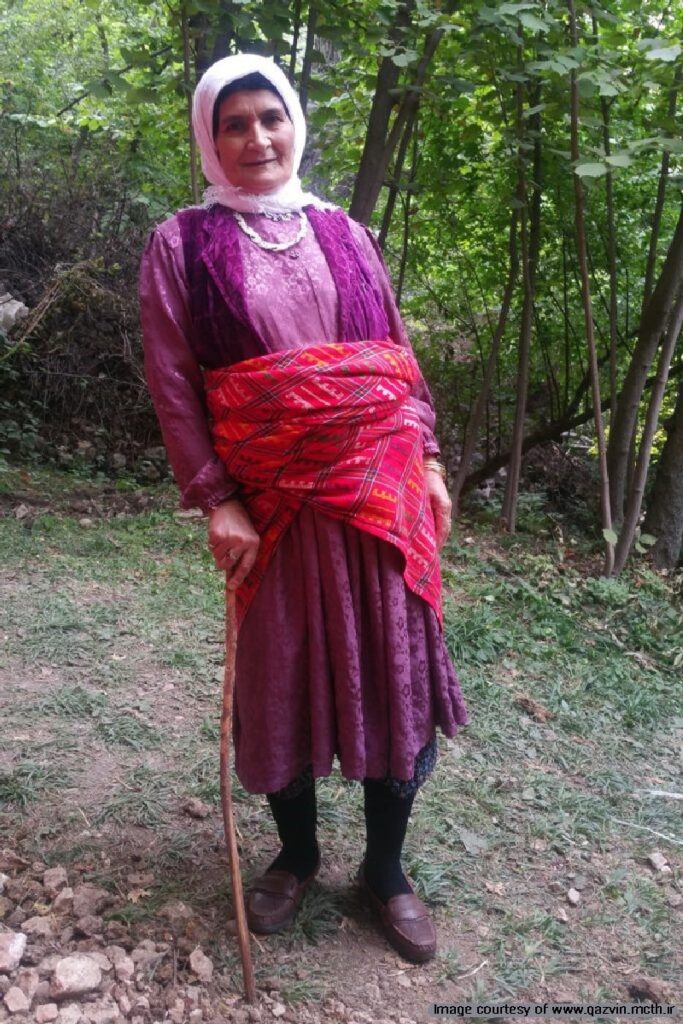
Men typically wear a “Chogha,” a long, open-front coat made from wool, which is ideal for the cooler climate. This is paired with “Tuman,” loose-fitting trousers that allow for ease of movement. A distinctive feature of men’s attire in Qazvin is the “Arakhchin,” a type of cap that is often embroidered with intricate designs. To complete the outfit, men wear a wide sash called “Shamle,” which is wrapped around the waist and serves both as a belt and a decorative element.
Women’s traditional clothing in Qazvin is known for its vibrant colors and elaborate embroidery. The “Gharbi,” a long, flowing dress, is a central piece of their attire, often adorned with floral patterns and intricate needlework. This dress is complemented by a “Charghad,” a large, square scarf that is folded into a triangle and draped over the head and shoulders. Women also wear “Tuman,” similar to the men’s trousers but often more colorful and decorated with lace or embroidery. To add a touch of elegance, women in Qazvin often wear “Gushvareh,” traditional earrings that are passed down through generations, adding a personal and historical touch to their ensemble.
8.Ardabil
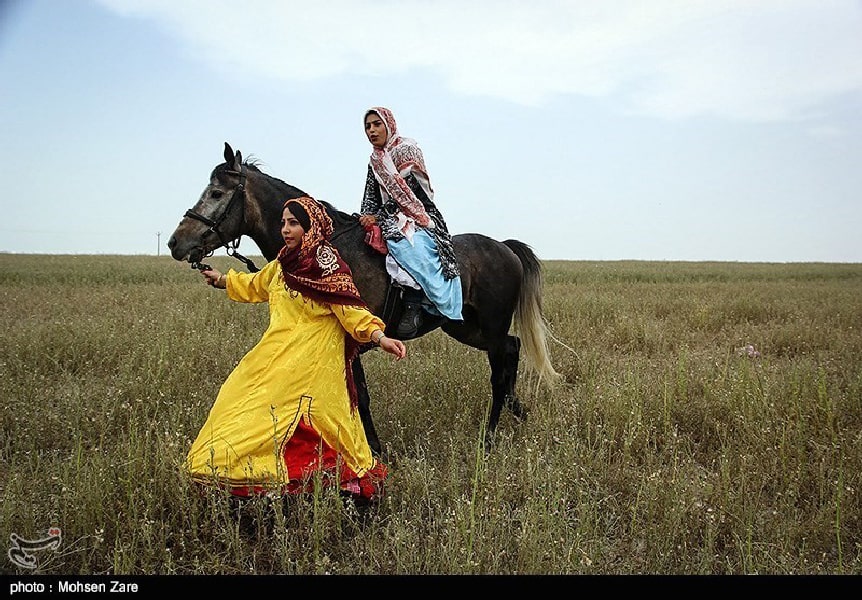
Men typically wear a “Pirahan,” a long tunic made from wool or cotton, which provides warmth during the cold winters. This is paired with “Shalvar,” loose-fitting trousers that allow for ease of movement. A distinctive feature of men’s attire in Ardabil is the “Papak,” a traditional felt hat that not only adds a unique touch to their outfit but also offers protection against harsh weather. Additionally, men often wear a “Shamle,” a wide sash wrapped around the waist, which serves both functional and decorative purposes.
Women in Ardabil wear beautifully crafted clothing that highlights their skill in embroidery and textile work. The “Korsi,” a long, flowing dress, is a central piece of their attire, often adorned with intricate patterns and vibrant colors. This dress is complemented by a “Charghad,” a large, square scarf that is folded into a triangle and elegantly draped over the head and shoulders. Women also wear “Tuman,” wide-legged trousers that are both comfortable and practical.
9.Azerbaijan
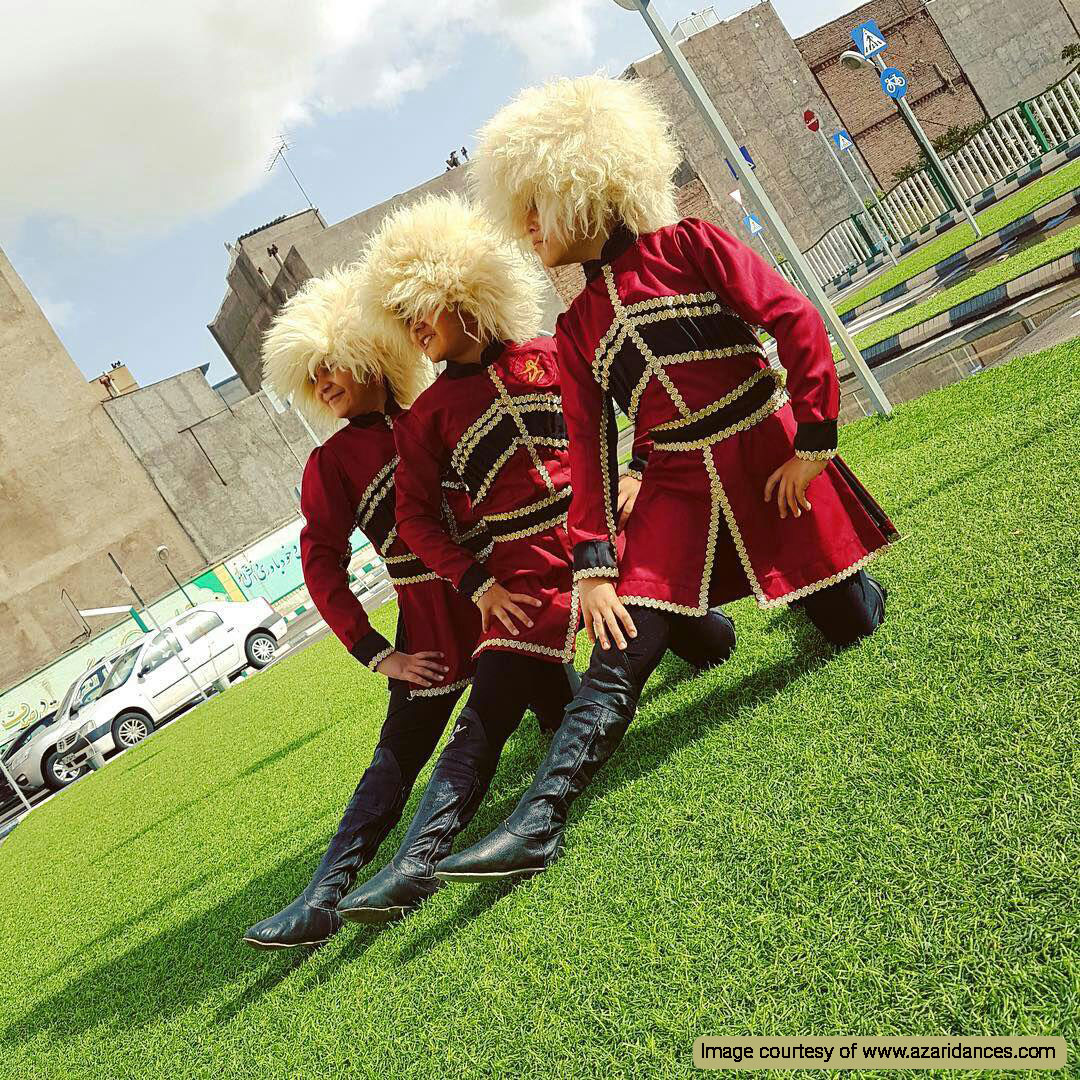
Azerbaijan province showcases the unique Persian costume of the Azeri people. Women wear “qalın” dresses, often adorned with ornate embroidery, while men sport woolen “jacket” outfits with baggy trousers. In Azerbaijan province, men often wear traditional boots known as “Chariq.” These boots are typically made from leather and are designed to be durable and comfortable, suitable for the rugged terrain of the region. Traditional patterns often depict geometric shapes, reflecting the rich cultural heritage.
10.Lorestan
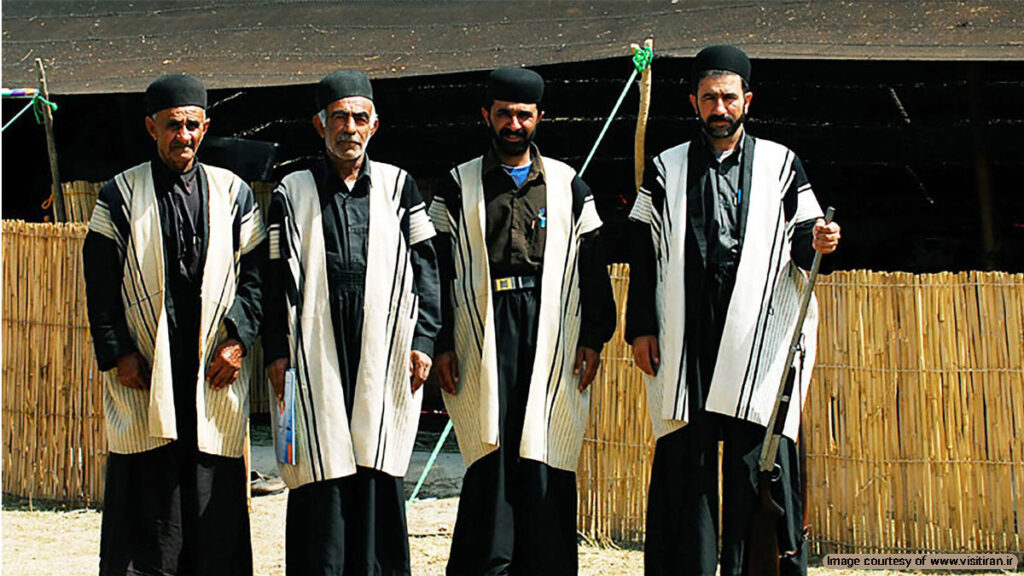
Lorestan is known for its traditional clothing that emphasizes tribal identity. Women wear long dresses with colorful sashes and intricate beadwork, while men often wear “Kamali” (long shirts) paired with wide trousers. The outfits convey a sense of pride in their cultural roots.
11.Kurdistan
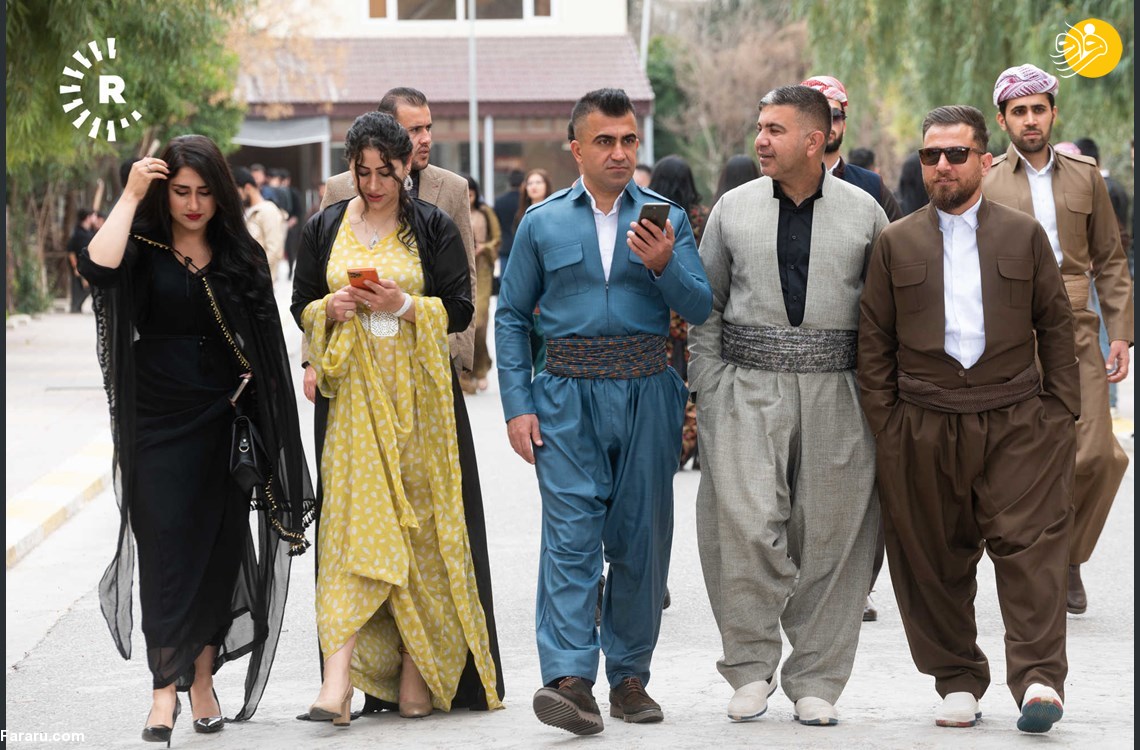
Kurdistan’s traditional clothing is vibrant and expressive. Women often wear long, colorful dresses adorned with intricate embroidery, while men typically wear “Sharwal,” which are loose, billowy trousers that taper at the bottom, providing comfort and ease of movement. These trousers are often paired with a “Kurtak,” a matching jacket worn over a dress shirt known as “Kras.” The outfit is completed with a “Pshtwen” or “Pshten,” a long, narrow piece of lightweight fabric wrapped around the waist as a cummerbund, adding both functionality and a decorative touch.
A notable accessory in Kurdish men’s attire is the “Klash,” traditional handmade shoes crafted from white fabric, known for their durability and comfort.
12.Khuzestan
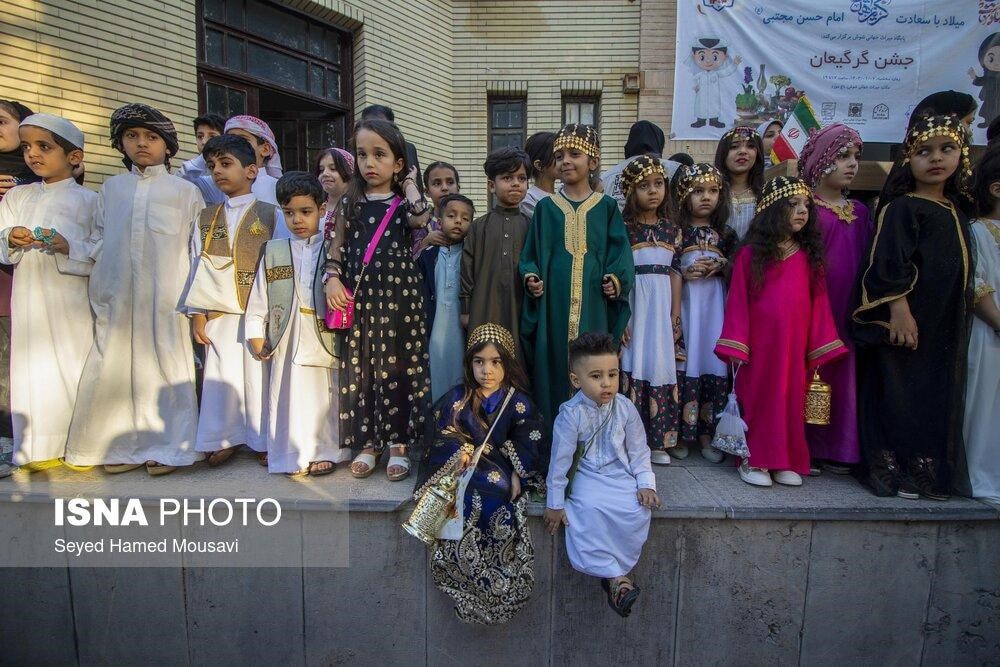
In Khuzestan, traditional clothing is influenced by its diverse ethnic groups, including Arab, Bakhtiari, and Lur tribes. Women often wear long “abaya” with colorful accessories, while men wear loose-fitting “dishdasha” (robes). The clothing is suited for the hot climate of the region.
13.Bushehr
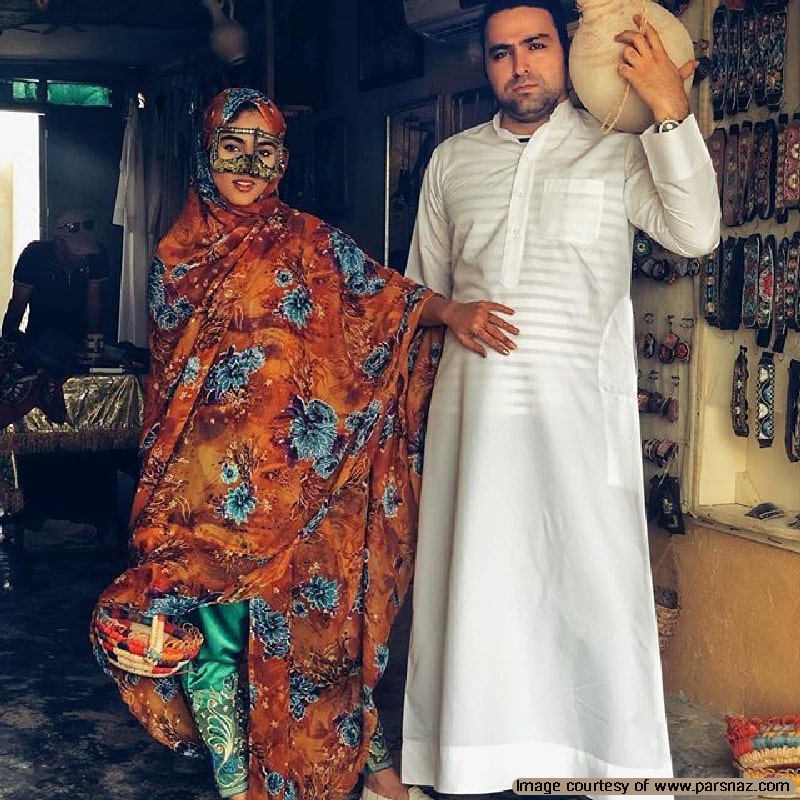
Bushehr’s coastal culture is reflected in its traditional attire. Women often wear colorful printed “malek” dresses, while men wear loose “shalwar” and lightweight long shirts. The fabrics are usually cotton or linen, accommodating the region’s hot and humid climate.
14.Hormozgan
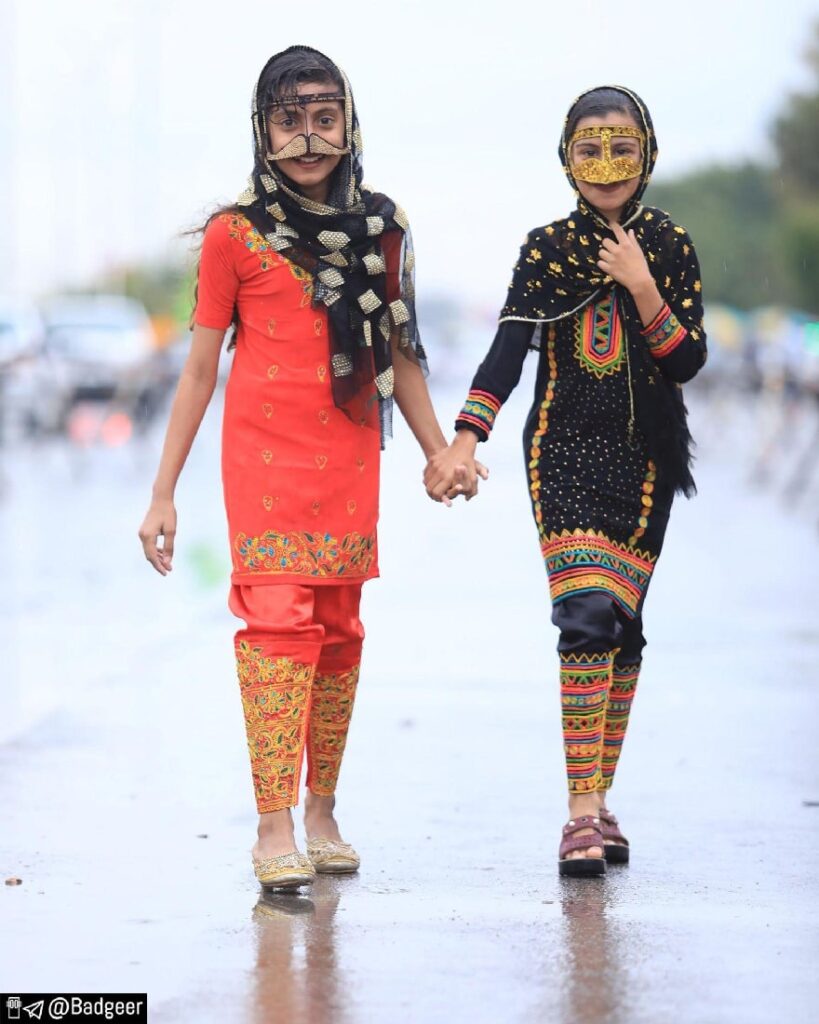
Men typically wear a “Dishdasha” or “Jubbah,” which is a long, loose-fitting robe made from light, breathable fabrics like cotton or linen. This garment helps keep them cool while protecting them from the sun. Underneath, they often wear loose trousers called “Sirwal.” A distinctive feature of men’s attire in Hormozgan is the “Gahfiya,” a type of cap that is often intricately embroidered and worn under a turban or on its own. Sandals, known as “Naal,” are commonly worn due to the warm weather, providing comfort and ventilation.
Women’s traditional clothing in Hormozgan is equally adapted to the climate and is known for its vibrant colors and intricate designs. A key piece of their attire is the “Baneh,” a long, flowing dress that is often brightly colored and decorated with elaborate embroidery. This dress is complemented by the “Chador,” a large piece of fabric that covers the head and body, providing both modesty and protection from the sun. Women also wear “Shalvar,” loose-fitting trousers that are tight around the ankles and often embroidered at the cuffs. To complete their outfit, women in Hormozgan often wear “Burqa,” a traditional face covering that varies in style and design across different parts of the province.
15.Fars
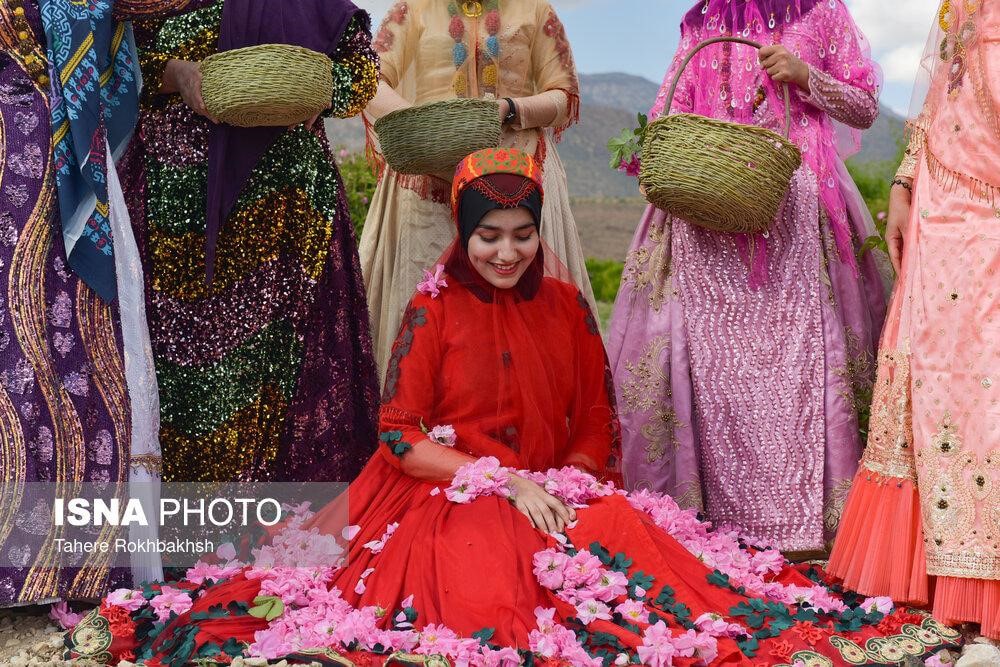
Fars province, home to the ancient capital of Persepolis, boasts traditional garments rich in history. Men typically wear a “Pirahan,” a long, collarless shirt that is often white and made from lightweight cotton, ideal for the region’s warm climate. This is paired with “Shalvar,” loose black trousers that provide comfort and ease of movement. Over the shirt, men often wear a “Choogha,” a woolen jacket that adds an extra layer of warmth during cooler months.
Women’s traditional clothing in Fars province is known for its vibrant colors and intricate designs. A central piece of their attire is the “Jameh,” a long, flowing dress that is often adorned with beautiful embroidery and patterns. This dress is complemented by a “Rusari,” a headscarf that is elegantly draped over the head and shoulders, providing both modesty and protection from the sun. Women also wear “Shaliteh,” wide-legged trousers that are comfortable and practical for daily activities.
Qashqai people in Fars
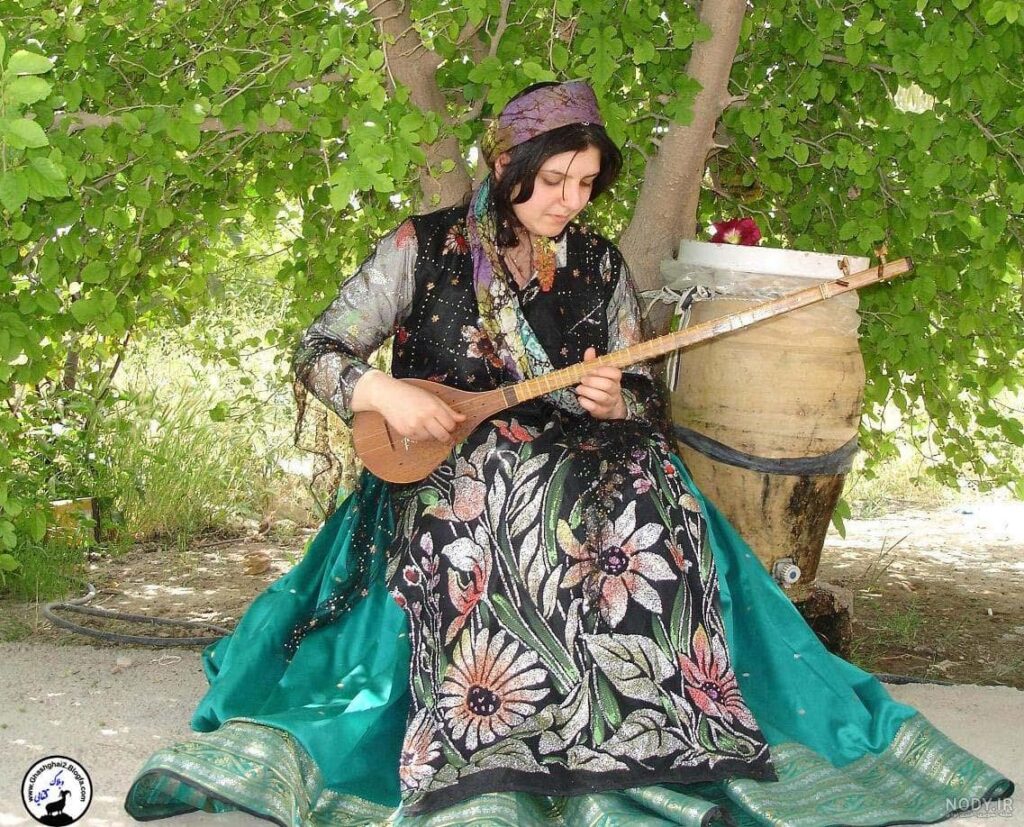
Qashqai women often wear long, layered skirts in bright colors, paired with a tunic that has side slits for ease of movement. Their outfits are completed with a headscarf, typically pinned under the chin, allowing some hair to frame their faces. Men, on the other hand, wear collarless white shirts and long cloaks, secured at the waist with a cummerbund. They also sport a distinctive hat made from sheep’s wool, known as the “Dogushi” or “two-ear” felt hat. This traditional clothing not only showcases the Qashqai’s rich cultural heritage but also reflects their adaptability to a nomadic lifestyle.
16.Isfahan
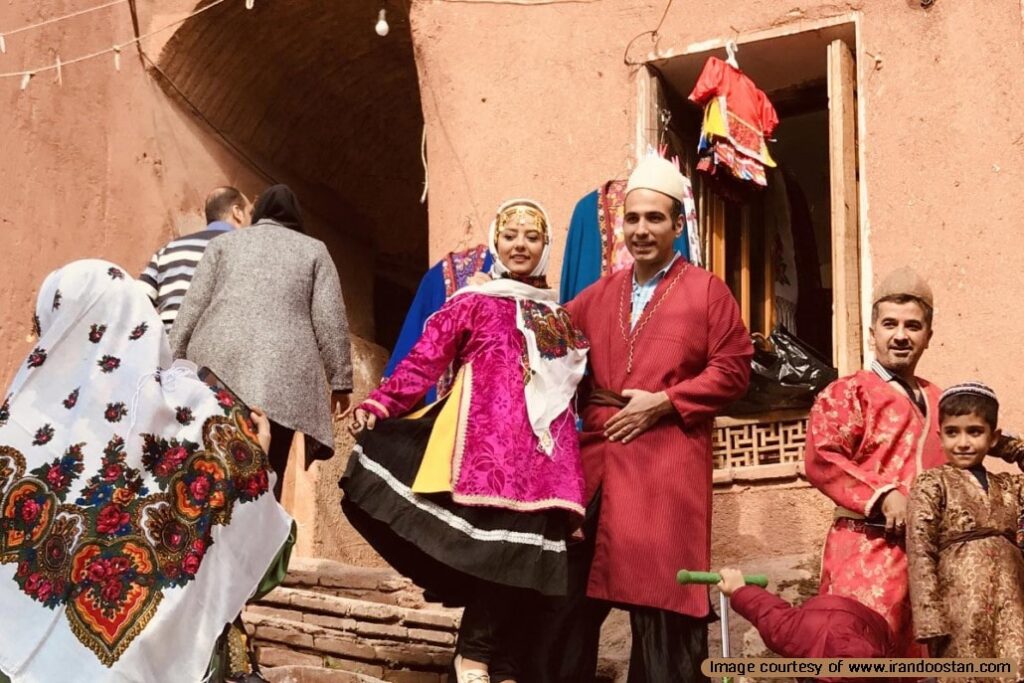
Isfahan’s traditional clothing is renowned for its beauty and craftsmanship. Women wear “pahlevan” dresses adorned with intricate patterns and silk shawls, while men often wear “khosh-bos” jackets with loose trousers. The region’s artistry is evident in the exquisite textiles produced.
17.Sistan Baluchestan
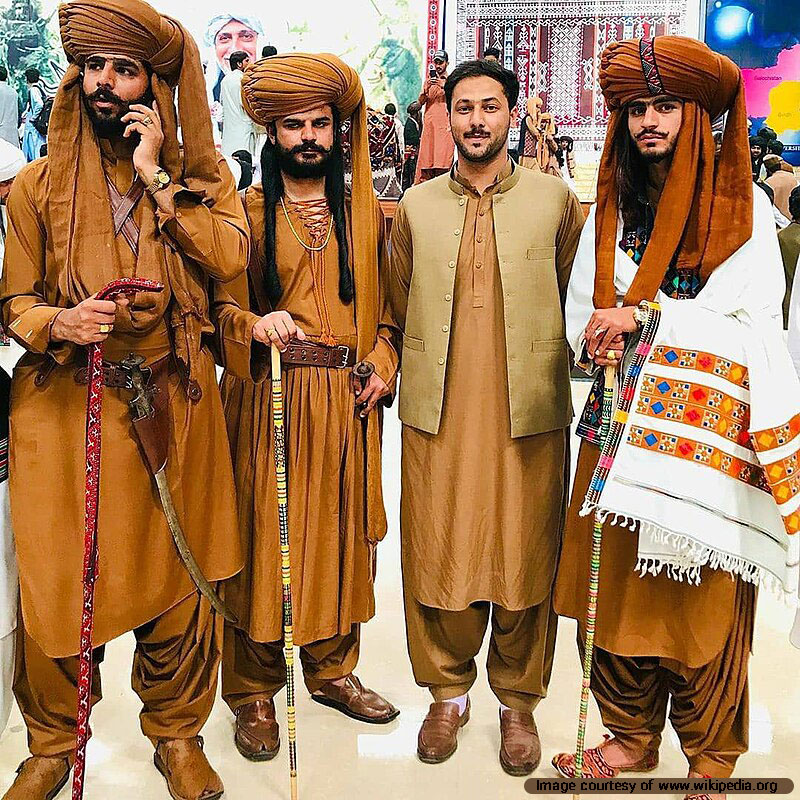
In Sistan Baluchestan, the traditional clothing reflects the cultural heritage of the Baluchi people. Women wear colorful “chador” and layered dresses adorned with beadwork, while men typically wear white “shalwar” and long shirts. The vibrant colors and patterns are characteristic of the region.
18.Kerman
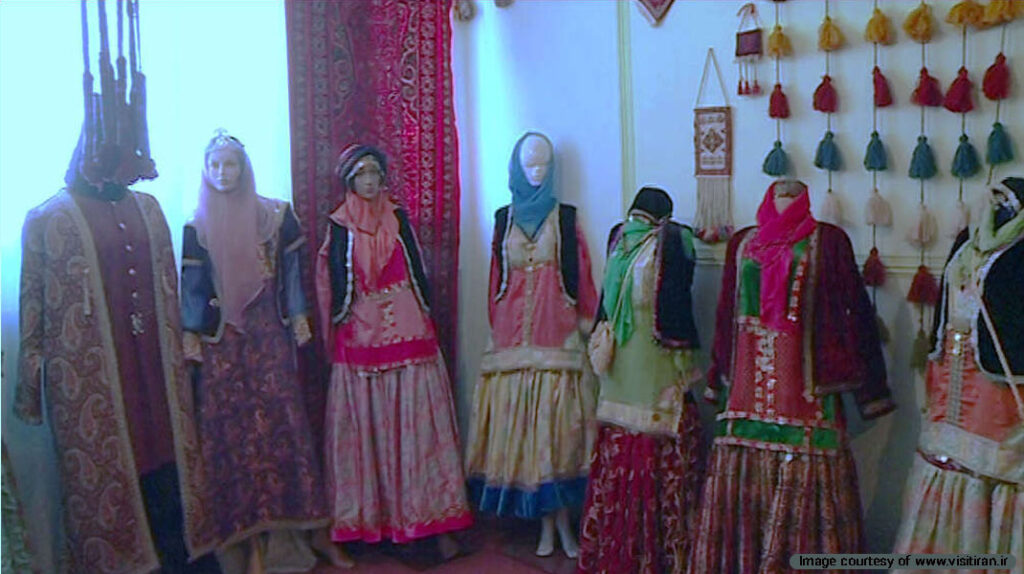
Kerman’s traditional clothing is often made from local wool and cotton. Women wear colorful skirts with embroidered blouses, while men usually wear long “polo” shirts with loose-fitting trousers. The attire showcases the craftsmanship of local weavers and reflects the region’s arid climate.
19.Semnan
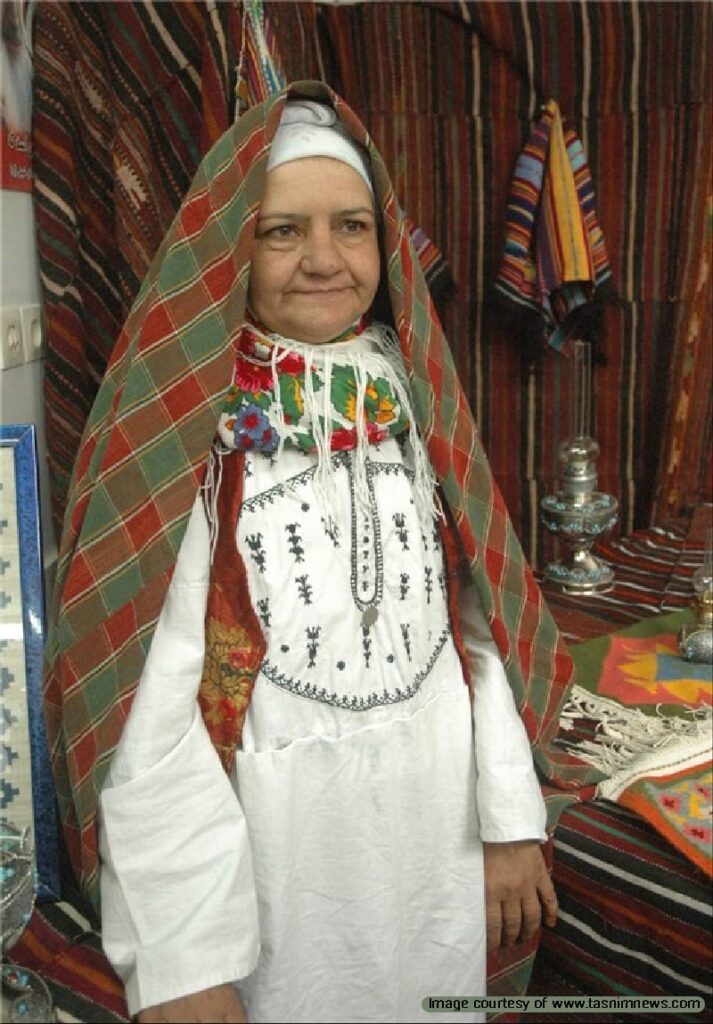
In Semnan, traditional clothing varies across the region. Women typically wear long, layered dresses with intricate patterns, while men wear “jabbah” and loose trousers. Women wear a dress called “Kazhin Shoy,” made from a fabric known as “Kazh,” derived from leftover silk. The skilled women of the tribe entirely craft this fabric. The predominant color in their clothing is red, adorned with unique embroidery called “Sakhteh.” The Kazhin Shoy is a long dress with intricate needlework on parts like the cuffs and lower The focus is on functional and comfortable garments adapted to the region’s climate.
20.Yazd
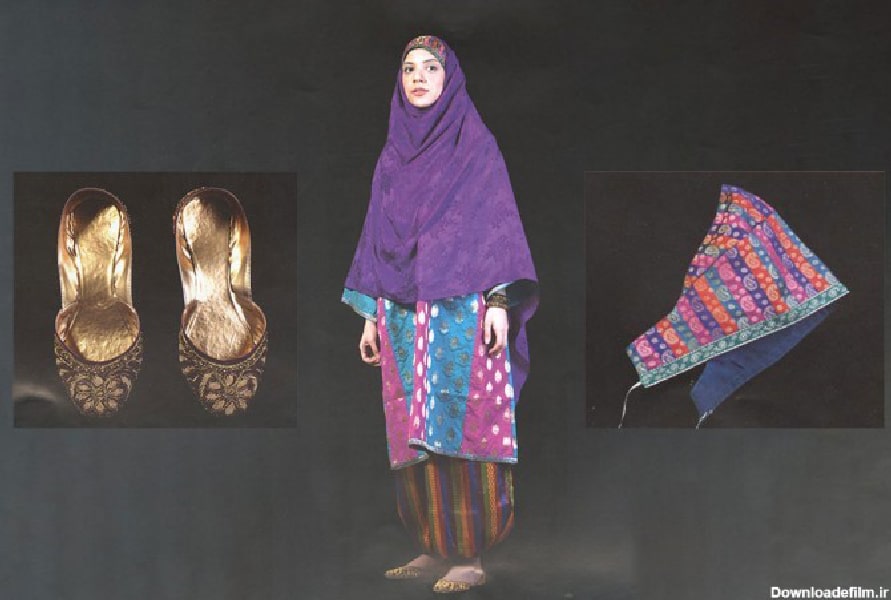
Yazd’s traditional clothing is characterized by lightweight fabrics suited for its desert environment. Women often wear colorful “malek” dresses decorated with patterns, while men don long-sleeve shirts and trousers. The use of breathable materials is vital for comfort in the heat.
21.Khorasan
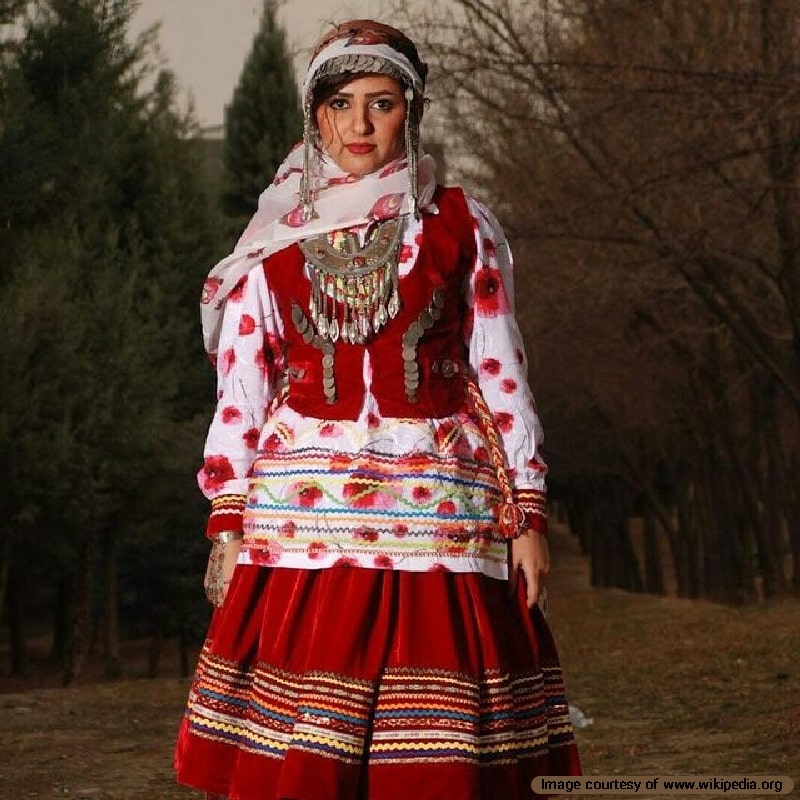
Khorasan is distinguished by its ethnic diversity, including the Torbat-e-jam, Turks, and Kurmanji peoples. Women often wear colorful “juyb” dresses, while Kurmanji men typically dress in “sharwa” with embroidered jackets. The clothing here varies by ethnicity, showcasing a rich tapestry of cultural influences.
Cultural Symbols and Meanings
Traditional Iranian clothing is rich with cultural symbols and meanings that reflect the country’s diverse history, social norms, and regional identities. Each garment, pattern, and accessory often carries significance that goes beyond mere aesthetics, embodying the values, beliefs, and artistic expressions of Iranian society.
1.Colors and Patterns in Persian Costumes
Colors in traditional Iranian clothing are imbued with deep meanings. For instance, red often symbolizes love and passion, while blue represents tranquility and spirituality. Green, a color associated with Islam, signifies life and nature. Patterns, such as florals or geometric designs, often reflect the rich Persian heritage of artistry and nature, with floral motifs symbolizing paradise and beauty, while geometric shapes might represent order and harmony.
2.Embroidery and Textiles in Persian Costumes
Embroidery plays a significant role in Persian costume, with intricate designs often telling stories or signifying status. The skill involved in hand embroidery, such as “khatam,” showcases the craftsmanship and cultural heritage of the artisans. Textiles themselves are symbolic; for example, silk is associated with nobility and wealth, while cotton represents practicality and everyday life.
3.Hats and Accessories
Headdresses and accessories are more than just fashion statements; they often signify marital status or regional identity. For instance, certain styles of turbans or head scarves may indicate a woman’s married status or her ethnic background. Additionally, jewelry, often adorned with turquoise or other precious stones, is believed to hold protective properties and signifies both beauty and prosperity.
4.Garment Styles and Social Status
The style and elaborate designs of garments often reflect the social status of the wearer. For example, the “khalat,” an ornate robe, was traditionally worn by the nobility, signifying power and prestige. In contrast, simpler, more practical garments were worn by common people, highlighting the class distinctions prevalent in Iranian society.
Frequently Asked Questions About Traditional Iranian Clothing
If you have any other questions about traditional Iranian clothing and Persian costumes, please let us know in the comments. We will respond as soon as possible.
What is traditional Iranian clothing?
Traditional Iranian clothing refers to the garments worn by people in Iran that reflect the country’s cultural, historical, and regional diversity. This includes various styles, fabrics, and designs specific to different ethnic groups and regions.
What are the most common traditional Iranian Clothing?
Common traditional garments include the “chador” (a full-body covering for women), “khalat” (ornate robes), “shalvar” (loose trousers), “qameh” (long tunics), and “juba” (traditional jackets).
What are some traditional Iranian accessories?
Traditional accessories include jewelry, such as earrings and necklaces, often made of silver or gold, and headpieces like “Majez” or “Lachak” which adorn women’s heads and signify cultural identity.
Can traditional clothing be worn in modern Iran?
Yes, traditional clothing is still worn during cultural celebrations, weddings, and religious events. Many modern Iranians also incorporate traditional elements into contemporary fashion.
What festivals or occasions are traditional Iranian outfits worn for?
Traditional clothing is commonly worn during various celebrations, including Nowruz (Persian New Year), weddings, religious festivals, and cultural events, showcasing heritage and community pride.
Where can I buy traditional Iranian clothing?
Traditional Iranian clothing can be purchased at local bazaars, specialty stores, and online retailers. Many artisan shops offer handmade garments that reflect regional styles and embroidery techniques.


